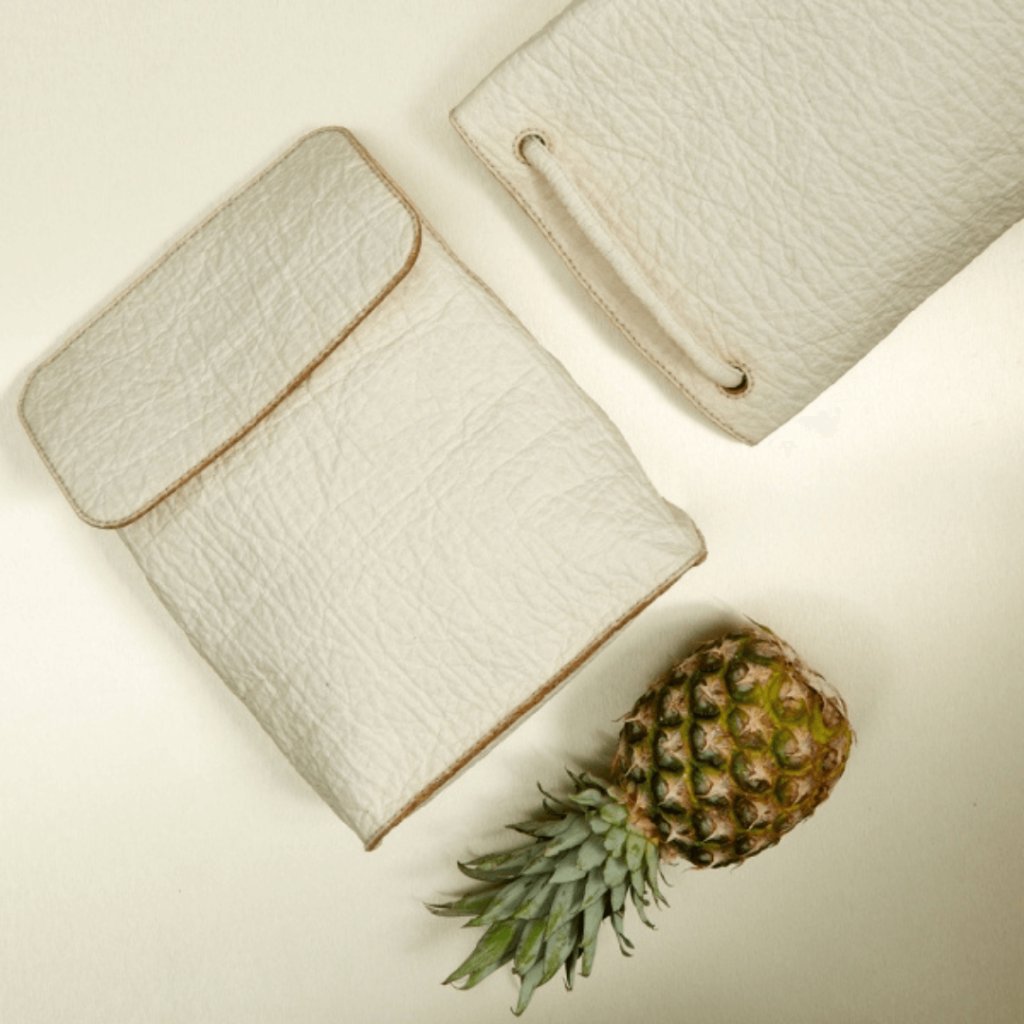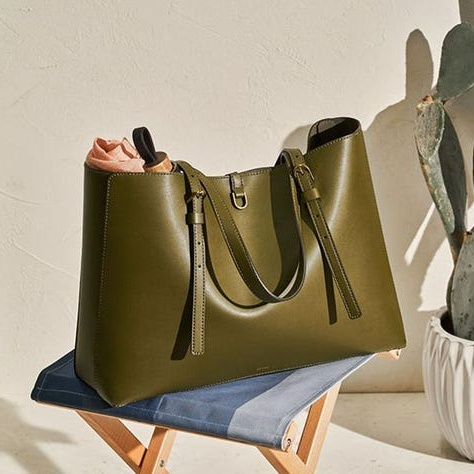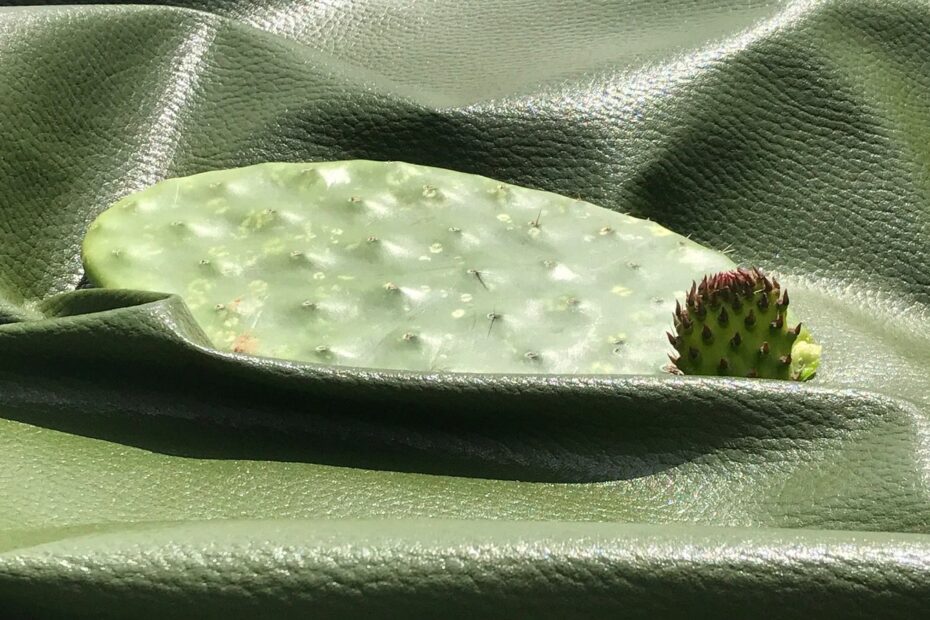Welcome to the fascinating world of vegan leather! This innovative material is sparking a revolution in the fashion industry. Yet, some might ask, what exactly is vegan leather? Well, vegan leather mimics the aesthetic and texture of traditional animal leather, but it’s made without harming animals.
The trendiness of vegan leather isn’t its sole allure. It carries an important promise – the chance to enjoy fashion ethically. Additionally, it’s a material of choice for those looking to make a positive environmental impact. Undoubtedly, leather has become a hot topic among fashion enthusiasts and environmentalists alike. Stay with us to explore more about the sustainable charm of vegan leather.
Through this journey, you’ll not only understand why vegan leather is popular but also why it’s here to stay. Yes, it’s more than a fleeting fashion trend – it’s a lifestyle choice for the conscious consumer. So, let’s dive deeper into the evolution, benefits, and long-term viability of leather.
The Rise of Vegan Leather
Today, vegan leather is making waves in the fashion world. Its rise is no accident. Consumer tastes are dramatically shifting towards ethical and sustainable alternatives. In fact, leather is now a leading player in this shift.
Fashionistas, influencers, and brands alike are increasingly embracing vegan leather. They recognize its unique blend of style, sustainability, and ethics. But it isn’t just about keeping up with the trend. People are choosing vegan leather because they care about their impact on the world.
Of course, public awareness plays a vital role here. More people now understand the environmental harm of traditional leather. In contrast, vegan leather offers a more sustainable solution. It meets their fashion needs without compromising their values.
Plus, technological advancements have pushed leather into the limelight. Production methods continue to evolve, resulting in high-quality leather. This innovation reinforces its position as a viable and desirable alternative to animal leather.
In conclusion, the rise of vegan leather is not a fluke. It’s a conscious decision by informed consumers. Vegan alternative is here to stay, and its future looks brighter than ever.
What Makes Vegan Material Sustainable
Vegan leather stands out for its eco-friendly characteristics. But what exactly makes vegan leather sustainable? Let’s delve into that. Traditional leather production often involves harmful chemicals. These substances can damage ecosystems and human health.
On the other hand, alternative leather offers a cleaner alternative. It cuts out the need for toxic substances used in regular leather processing. Leather also reduces the demand for animal farming, which contributes to deforestation and climate change.
Plus, leather taps into renewable plant resources. Manufacturers create vegan leather from various plant materials like cork, pineapple, and apple peels. Hence, leather production aligns with the principles of circular economy, reducing waste and promoting sustainability.
However, it’s important to note that not all vegan leathers are created equal. Some variants use PVC or other plastics, which aren’t environmentally friendly. Therefore, opting for plant-based vegan leathers is often the greenest choice.
Sustainability in fashion is not just a buzzword. It’s a commitment to our planet. By choosing vegan leather, we make a stand for a more sustainable future. We create fashion that doesn’t cost the earth.
Here are the top 7 valuable properties of Vegan Leather:
- Sustainability: Vegan leather uses plant-based materials or certain plastics, reducing the environmental impact compared to traditional leather.
- Ethical Production: No animals are harmed in the production of leather, making it an ethical choice for consumers against animal cruelty.
- Durability: Leather can be very durable, and with proper care, can maintain its appearance for a long time.
- Ease of Maintenance: Vegan material is typically easier to clean and maintain than traditional leather. It doesn’t crack or fade as easily and is more resistant to staining.
- Versatility: Vegan alternative can be produced in a variety of colours and textures, offering broad possibilities for fashion design.
- Cost-Effective: leather is generally less expensive to produce and purchase than traditional animal leather, making it a more accessible material for consumers.
- Innovation-Friendly: As vegan leather is a manufactured product, there is significant potential for innovation and improvement in its production processes, resulting in superior future versions.
Types of Vegan Leather
Vegan leather boasts a rich diversity in its makeup. Broadly, leather falls into two categories. The first category encompasses vegan leathers produced from synthetic materials. For example, PVC (Polyvinyl Chloride) and PU (Polyurethane) vegan leathers offer durability and cost-effectiveness. However, they pose environmental challenges due to their plastic content.
Shifting to the second category, we find plant-based vegan leathers. They offer a more sustainable choice. One prominent type is cork leather. Derived from the bark of cork oak trees, it’s lightweight, naturally waterproof, and eco-friendly.
Pinatex, another plant-based sustainable leather, comes from pineapple leaf fibers. Its strength and flexibility make it a popular choice.

Similarly, MuSkin vegan leather, made from mushroom caps, offers a soft, breathable, and biodegradable option.

Yet, the list doesn’t stop there. We also have apple leather, produced from apple peels and cores. It’s a byproduct of the apple juice industry, thus utilizing waste in a sustainable manner. Similarly, grape leather, made from grape waste from the wine industry, is another innovative solution. Teak leaf leather, made from fallen teak leaves, is another unique addition to the family of vegan leathers.

Each cruelty-free leather type carries distinct characteristics. This spectrum of textures and features ignites creativity in fashion design. It demonstrates that leather is not merely an alternative to animal leather. It’s about reimagining materials and pioneering the path of sustainable fashion.
The list provided does cover a good range of the most common and innovative types of leather currently available. However, given the pace of research and development in the field, it’s possible there are more types of vegan leather in development or smaller-scale production that are not widely known yet. Here you can find more leather types:
- Polyurethane (PU) Leather
- Polyvinyl Chloride (PVC) Leather
- Cork Leather
- Piñatex (Pineapple Leather)
- MuSkin (Mushroom Leather)
- Apple Leather
- Grape Leather
- Teak Leaf Leather
In addition to these, there are also other types like coffee leather, kombucha leather (made from bacterial cellulose), and lab-grown leather (made using bioengineering techniques), but they might not be as widespread or commercially available.
Ready to take your ethical fashion game to the next level? Don’t miss our next blog post ‘Vegan Dress Shoes for Men: Combining Style and Compassion‘ – discover how you can make a powerful fashion statement without compromising your values!
Time to Vegan
Benefits of Cruelty-free Leather
Vegan leather offers a myriad of benefits that extend beyond the realm of fashion.
- First and foremost, it’s a cruelty-free option. Unlike traditional leather, vegan production doesn’t involve harming animals. It aligns with the growing trend of conscious consumerism.
- Moreover, vegan material addresses significant environmental concerns. By opting for plant-based variants, we reduce reliance on fossil fuels and harmful chemicals. It’s a step towards mitigating climate change.
- Vegan leather also champions the concept of circular economy. It utilizes agricultural waste like pineapple leaves, apple peels, or cork bark. This waste management aspect further elevates its sustainability credentials.
- In terms of practicality, sustainable leather doesn’t disappoint. It’s easy to clean, maintain, and often more resistant to water damage. Plus, it offers a diverse range of textures, colors, and finishes.
- Lastly, vegan material is generally more affordable than traditional leather. This price point makes ethical and sustainable fashion accessible to more people.
In conclusion, leather marries style, ethics, and sustainability. It shows that we can enjoy fashion without compromising our values or the health of our planet.
The Durability and Quality of Vegan Leather
One common concern about leather revolves around its durability and quality. Yet, let’s debunk some misconceptions. Modern leather can rival traditional leather in durability. It can withstand daily wear and tear, often maintaining its look for years.
Furthermore, technology advancements continue to improve the quality of sustainable leather. It’s no longer the ‘cheap imitation’ some imagine it to be. Many high-end fashion brands now incorporate sustainable leather into their collections.
Now, let’s talk about the feel of vegan material. It can mimic the texture of traditional leather quite impressively. From smooth to grainy textures, leather offers something for everyone’s taste.
As for color and finish, vegan leather has an edge. It can come in almost any color, unlike traditional leather. It can be glossy, matte, or even metallic.
However, like any material, vegan one requires proper care. This ensures its longevity and keeps it looking its best.
In essence, vegan leather stands up to its traditional counterpart in durability, feel, and appearance. It’s high time we rethink our perception of ‘synthetic’ as inferior. With cruelty-free leather, you get style, ethics, and durability all in one.
Vegan Leather in Fashion Industry
Vegan material is making a powerful statement in the fashion industry. Renowned brands are embracing it as a stylish, ethical alternative. Stella McCartney, a trailblazer in ethical fashion, uses vegan leather extensively in her designs.
But it’s not just high-end designers who are onboard. Mainstream brands like H&M and Zara are introducing vegan leather items too. This shows vegan leather’s widespread acceptance and appeal.
Even luxury brands like Gucci and Prada are exploring the realm of leather. They’re starting to acknowledge the demand for more sustainable fashion. This is a testament to vegan leather’s growing influence.
Fashion weeks around the globe are also showcasing vegan alternatives. It’s becoming a staple on runways, proving its fashion-forward status. Designers are experimenting with leather, creating stunning and innovative pieces.
The adoption of vegan materials is not a marketing gimmick. It’s a response to consumer demand for ethical, sustainable fashion. The fashion industry is recognizing this and evolving accordingly.
Caring for Your Vegan Leather Products
So, what does the future hold for vegan materials? Given its current trajectory, it appears to have a bright future ahead. Vegan leather is poised to become a mainstay in the fashion industry.
As we move forward, innovation will further enhance the quality of vegan materials. Research is already underway to develop even more eco-friendly variants. This means we can expect future versions of vegan leather to be more sustainable and high-performing.
Moreover, consumer demand for ethical, sustainable fashion isn’t waning. This will continue to drive the growth of vegan options. As more consumers embrace alternative leather, brands will follow suit.
There’s also potential for leather in other industries. The automotive and furniture sectors are showing interest in this sustainable material. This expands the scope of sustainable leather beyond fashion.
In essence, the journey of vegan leather is just beginning. It’s a journey towards a more ethical, sustainable world. Vegan option is more than a trend – it’s a movement that’s here to stay.
The Future of Vegan Leather
In closing, we’ve discovered the undeniable potential of vegan leather. It’s a revolutionary material changing the fashion landscape. But, can it replace traditional leather entirely?
The answer lies in consumer hands. Each purchase we make sends a powerful message. By choosing cruelty-free leather, we vote for a more sustainable, ethical world.
Remember, vegan material isn’t just a more humane alternative to traditional leather. It’s an innovative material that marries aesthetics with ethics. Its range of types and properties offers limitless possibilities.
Indeed, embracing vegan alternatives means embracing progress. It’s an opportunity to participate in a sustainable fashion revolution. A revolution that prioritizes both style and substance.
As more people join this movement, the influence of vegan leather will grow. The future of fashion looks greener, kinder, and more innovative with vegan alternatives.
Undeniably, vegan material is more than a trend. It’s a testament to the power of conscious consumerism and innovative thinking. It’s our ticket to a more sustainable, stylish future.
Conclusion: Embracing Vegan Leather
Now that we’ve delved into the world of sustainable leather, it’s clear this material is here to stay. But why should you consider choosing alternative leather? Let’s review some key points.
Firstly, vegan option aligns with a cruelty-free lifestyle. It offers a stylish alternative without the need for animal suffering. Therefore, you can look good and feel good about your choices.
Secondly, eco leather takes a stand for the environment. By opting for plant-based versions, you contribute to reducing harmful emissions. In this way, your fashion choices become a statement for sustainability.
Thirdly, vegan material introduces us to the concept of circular fashion. It utilizes agricultural waste and promotes sustainability. That’s a win-win situation for us and the planet.
Fourthly, sustainable leather won’t break the bank. It makes sustainable, ethical fashion accessible to a wider audience. You don’t have to compromise on style or your budget.
In summary, choosing the vegan way means choosing a better future. It’s a conscious decision to support innovation, sustainability, and ethics. Vegan leather, undoubtedly, is fashion’s way forward.



